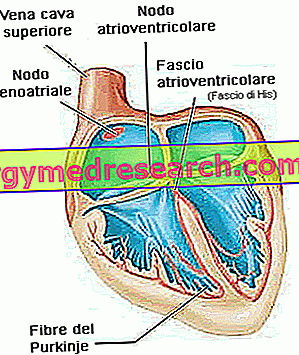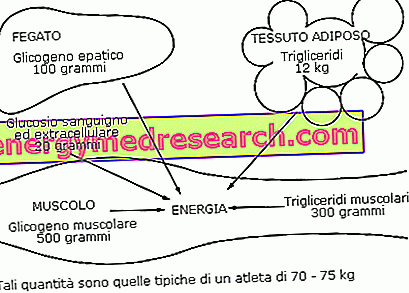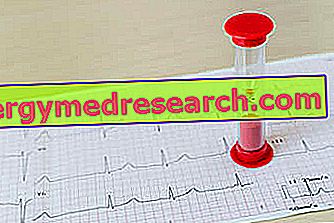Generality Sinus tachycardia is an arrhythmia characterized by an increase in the frequency and speed of the sinus rhythm , ie the heartbeat imposed by the atrial sinus node. Sinus tachycardia is the most common form of tachycardia and often does NOT represent an alarming episode. In fact, similar arrhythmic manifestations can be the normal consequence of physical exercises or of a strong emotion, physiological events at the end of which the cardiac rhythm returns to normal
Category heart health
Edited by: Gian Paolo Tascio Assuming that the objectives of a modern sports center are increasingly directed from fitness to wellness, it is right to say, for the many competent operators in the sector, that within a training room the modulation of workloads, which are administered to the members during group lessons, quantifies the skills, experience and skills of a valid instructor
To calculate the maximum theoretical heart rate the KARVONEN formula has been used for several years, from the name of the Finnish scholar who first elaborated it. According to this rule, the theoretical maximum heart rate is calculated by subtracting one's age from 220. Fc max = 220-age (years) The calculation is quite simple and the formula is easily remembered
This article aims to clarify once and for all what is the ideal heart rate for weight loss, given the great confusion and summary information circulating on the subject. Too often, instructors and personal trainers solve the problem by recommending a heart rate between 60 and 70% of HRmax, since at this level of intensity we find the highest consumption of fat, therefore theoretically the maximum lipolytic activity of the exercise
Generality The BLS and the BLS-D are protocols comprising a sequence of first aid actions and maneuvers to be implemented in emergency situations and, in particular, in the event of respiratory and / or cardiac arrest. The BLS and BLS-D protocols can be put into practice by both health professionals and non-health workers, provided they have followed the appropriate courses held by doctors and qualified operators on behalf of the Italian Resuscitation Council (IRC)
Generality Alcoholic heart disease is a heart disease that occurs due to excessive consumption of alcohol. From the medical point of view, it is included in the list of so-called dilatative cardiomyopathies. Generally asymptomatic at the beginning, in its most advanced stages alcoholic heart disease is responsible for symptoms such as: difficulty breathing (dyspnea) under stress and at rest, tachycardia, chest pain, edema in multiple parts of the body, syncope, abnormalities in the heartbeat and problems urinary; furthermore, always in its most advanced stages, it has a high probability of givi
Generality Fulminant infarction is a serious form of heart attack, which - following the obstruction of one of the two main coronaries - involves a large area of cardiac muscle tissue; hence a high probability of sudden death of the person affected. Generally, an embolus resulting from a thrombus or an atheroma causes the fulminant infarct episodes; more rarely, it is a coronary spasm due, for example, to the use of drugs such as cocaine, amphetamine or methamphetamine. Sy
Introduction For sudden cardiac death (MIC) we want to indicate an unexpected and unexpected natural death that occurs due to causes of cardiac origin . This is a death that occurs quickly within an hour of the onset of acute symptoms which, however, sometimes do not manifest themselves, making it difficult - if not impossible - to identify the imminent onset
Introduction Cardiopulmonary resuscitation is a first aid tool that - if undertaken promptly and correctly - can save several lives . In detail, cardiopulmonary resuscitation consists of a series of maneuvers aimed at maintaining blood circulation and transporting oxygen to the various organs and tissues in an individual, when the heart is no longer able to contract or is unable to convey blood through blood vessels
Introduction Nocturnal tachycardia is a significant increase in heart rate that occurs during the night. More in detail, nocturnal tachycardia is a symptom that can be associated with different conditions, both pathological and non-pathological. Contrary to what one might think, in fact, nocturnal tachycardia is not always correlated to cardiac pathologies, but can also be induced by disorders having different origins
What is the heart rate monitor The heart rate monitor is a simple device that can instantly detect the heart rate, a parameter that indicates the number of beats that the heart makes in a minute. Thanks to a simple sensor placed inside a chest strap, the heart rate monitor transmits electromagnetic signals that will be appropriately coded and processed by a receiver clock











